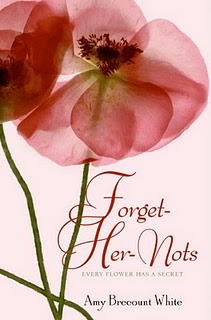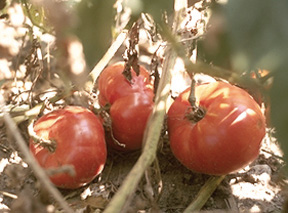
I confess I don’t know much about the Amish way of life, and so when I heard about this book, I couldn’t wait to read it. I hoped it would enlighten me as to how and why the Amish live the way they do, without electricity or automobiles. To hear it all told from a mother’s point of view seemed irresistible for me.
I love the image on this book cover — it’s a work of art! There’s an expression of intense concentration and joy on this child’s face as she quietly creates a secret world with her pencil and paper. It’s how I feel most of the time when I can squirrel away a few minutes with my own journal. Thank you to whoever you are who took this photo, and thank you to Marianne Jantzi for being brave enough to share your private family stories with the loud outside world.
As a member of the Milverton Old Order Amish community, the oldest and largest of ten Amish settlements in Ontario, Canada, Marianne Jantzi’s days are filled with chores most of us can’t imagine. Her home is heated by wood stoves, which she must also use to cook her meals. Her husband leaves for work before dawn, transported by a horse and buggy driver. The Jantzis own a shoe business, attached to the front of their home, and all transactions are recorded by hand.
Jantzi’s writing reaches readers all over North America via her much-loved “Northern Reflections” column in The Connection, a favorite magazine among Amish and Mennonite communities. She doesn’t have a computer at home to type out her thoughts. They’re written by hand and driven to town for someone else to type and edit. As a mother of four young children, the oldest in kindergarten, Jantzi’s days are incredibly busy. Yet she takes the time to reflect on the quiet simple pleasures that fill a home with love.
Reading her stories brought back happy memories of my own early days of mothering. Young children can be both exhausting and endearing, and I love how she takes the time to listen and record their conversations. I especially enjoyed reading about her gardening experiences and how she provides healthy meals for her family from her own backyard.
Her book answered many questions I had about Amish life, and it’s an important work to be added to Amish book collections, preserving our North American history. I found myself double-checking the copyright date in the front several times: was this really published in 2016? Yes, it’s a brand new book, and there really are people in the world who choose to live like Laura Ingalls Wilder in her Little House on the Prairie books. In fact, Jantzi enjoys reading that whole series out loud to her children.
Yet she doesn’t sugarcoat the frustrations of motherhood. Her children bicker at times and lose their shoes and socks. She worries about getting her home tidied up for a church meeting, which is no easy task with toddlers underfoot. But through her busy days, Jantzi finds strength in simple pleasures of family, fellowship, and quiet time with God.
I love her descriptions of the tight-knit Amish communal way of life. She is never lonely, being surrounded by people who have known and loved her family for generations. Here’s an example:
For my thirtieth birthday, my sisters put a quilt in a frame and invited…cousins in to quilt, visit, and eat. Since then, each glimpse of my lovely quilt reminds me of that wonderful day and the message it speaks to me. The quilt is filled with lovely blue flowered circles linking over a white background. Just like those flowery links, my friends joined around the quilt, blossoming from each other’s friendship and helping hands.
In the back of the book, she includes several of her family’s favorite kid-friendly recipes, and after reading her background stories, I can’t wait to try them out. She also has a section answering Frequently Asked Questions about Amish living, as well as “A Day in the Life of the Author.” I will treasure this book and add it to my collection of books written by mothers. She has helped me appreciate the “simple pleasures” in my own home and to savor my own gift of being surrounded by children.
I hope the Amish will continue being able to live the way they do, but at the end of the book, I began to feel a sense of tension. She describes how difficult it can be depending on others for internet transactions. For example, the Canadian government recently changed its methods of tax collection, and those who used to be able to send in paperwork by regular mail, now must make phone calls or submit electronically. Since Jantzi doesn’t have a phone in her home, she had a stressful day trying to handle this payment. I wonder what will happen in the future.
I also wondered about the children…what will they do about schooling once they graduate from the one-room Amish schools? Will the adolescents be allowed to learn to use technology? Will they be able to attend university? What kinds of careers will they be able to choose? I guess I finished the book with still more questions…but that’s what good literature is all about.
For now, I’ll savor the beauty of Marianne Jantzi’s writing, as she describes the beginnings of a Canadian summer:
We are busy reaping the fruits of the gift we longed and sighed for. For weeks, it was kept from reach, wrapped in deep, white layers of cold. Next we wished to quickly tear away the layers of chilly, soggy days…Those last layers were gradually stripped away by warm breezes and sunshine. Daffodils and tulips bloomed. Toes bared and leaves unfurled. There are barbecues and picnics, scooters and Rollerblades. Happiness reigns as we sing praises to God for this gift we’ve so graciously been given. Summer.
I can relate to that!
Simple Pleasures is part of the Plainspoken series, published by Mennomedia. These real-life stories of Amish and Mennonites include:
Book 1 – Chasing the Amish Dream: My Life as a Young Amish Bachelor, by Loren Beachy
Book 2 – Called to Be Amish: My Journey from Head Majorette to the Old Order, by Marlene Miller
Book 3 – Hutterite Diaries: Wisdom from My Prairie Community, by Linda Maendel
Book 4 – Simple Pleasures: Stories from My Life as an Amish Mother, by Marianne Jantzi
About the author:
Marianne Jantzi is an Amish writer and homemaker in Ontario, Canada. Formerly a teacher in an Amish school, Jantzi now educates and inspires through her “Northern Reflections†column for The Connection, a magazine directed mainly to Amish and plain communities across the U.S. and Canada. She and her husband have four young children and run a shoe store among the Milverton Amish settlement of Ontario.
Thank you to Litfuse for a complimentary copy of this book for the purposes of review.









